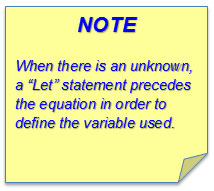
In this section, you will write inequalities that represent a real-world problem situation. First, practice with an example.


Source: Cherry Tomato, James Maxon, Public Domain Pictures
Good soil, sunlight, and cool nights are needed for growing tomatoes in Texas. Seeds are usually planted inside around mid-January or the beginning of February. Suzy planted her seeds the first week of February. Her tomato seeds will turn into plants, and then tomatoes will grow on the plants until the end of June. How many weeks will pass from the first week of February through the end of June?

Let w = the number of weeks Suzy’s tomato plants have to produce tomatoes.
(There are approximately 22 weeks from February 1st until June 30th.)
w ≤ 22
![]() Use the interactive below to match each problem situation with an inequality. It is possible that all of the equations are not necessary. To make the match, drag the inequality next to the problem.
Use the interactive below to match each problem situation with an inequality. It is possible that all of the equations are not necessary. To make the match, drag the inequality next to the problem.
Use the interactive to answer the following questions.
Interactive popup. Assistance may be required.
Determine how to move the addend to the opposite side.
Interactive popup. Assistance may be required.
The coefficient in front of the variable has to be 1 in order to determine the solution to the equation.

Interactive popup. Assistance may be required.
In order to use only a less than or equal to sign the information needs to be moved.

Interactive popup. Assistance may be required.
If Charles doesn’t care which pair of running shoes he would like to purchase, the least amount he needs to save would be for the cheaper pair. But if he saves more, he could get the more expensive pair.
Interactive popup. Assistance may be required.
The elevator can hold a maximum of 3,500 pounds. The elevator already contains 750 pounds. The weight available can’t go over the maximum weight but doesn’t have to equal the maximum weight.
Interactive popup. Assistance may be required.
When doubled, the element’s melting point is greater than -38.87°C.